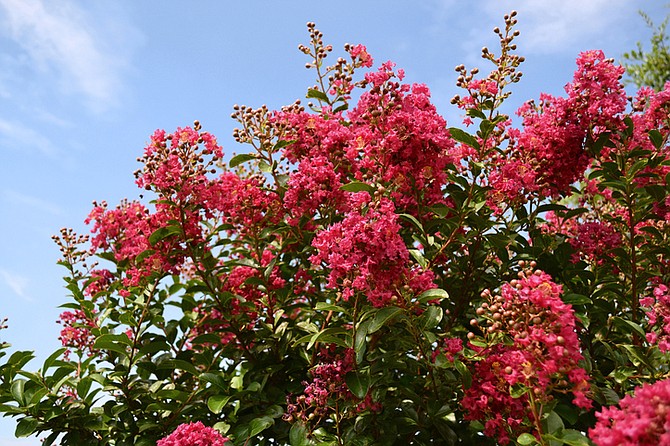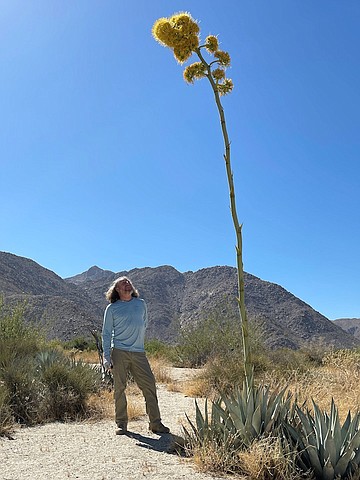 Facebook
Facebook
 X
X
 Instagram
Instagram
 TikTok
TikTok
 Youtube
Youtube

July Is San Diego’s Driest Month, according to precipitation data compiled since the year 1850. Only four hundredths of an inch of rain falls on average this month, compared to almost two inches in January — the wettest month. July also marks the beginning of a new rainfall year, as defined by local meteorological convention.

Agaves, (a.k.a. century plants), are coming into bloom in many summer gardens this month. After a decade or more (not a century) of growth, the larger kinds of agave send up a tall, yellow-blossomed flower stalk from a base of fleshy, succulent, thorntipped leaves. The stalk and basal leaves die, but suckers make new plants and begin the cycle anew.
Crepe Myrtles are in bloom around San Diego this month through the end of summer. This smallish, vase-shaped tree blossoms in colors ranging from white or pale pink to lavender, red, and blue. “Lilac of the South” is one of the nicknames given to this native tree of China because of its popularity in the warmer parts of the U.S.
No Bright Moon promises to steal much light from Independence Day’s fireworks displays. In fact, the moon is a waxing crescent. This and every July 4 (technically July 6 this year) is astronomically notable for the fact that it marks Earth’s aphelion — the time when our planet lies farthest from the sun (94.5 million miles). In January, Earth is an almost insignificant three percent closer to the sun than it is now. On account of this minor irregularity, Northern Hemisphere summers tend to be slightly cooler than they otherwise would be. At the same time, the Southern Hemisphere, which experiences winter during our “summer” months, has winters that tend to be slightly cooler.
The above comes from the Outdoors listings in the Reader compiled by Jerry Schad, author of Afoot & Afield in San Diego County. Schad died in 2011. Planet information from SkyandTelescope.org.


July Is San Diego’s Driest Month, according to precipitation data compiled since the year 1850. Only four hundredths of an inch of rain falls on average this month, compared to almost two inches in January — the wettest month. July also marks the beginning of a new rainfall year, as defined by local meteorological convention.

Agaves, (a.k.a. century plants), are coming into bloom in many summer gardens this month. After a decade or more (not a century) of growth, the larger kinds of agave send up a tall, yellow-blossomed flower stalk from a base of fleshy, succulent, thorntipped leaves. The stalk and basal leaves die, but suckers make new plants and begin the cycle anew.
Crepe Myrtles are in bloom around San Diego this month through the end of summer. This smallish, vase-shaped tree blossoms in colors ranging from white or pale pink to lavender, red, and blue. “Lilac of the South” is one of the nicknames given to this native tree of China because of its popularity in the warmer parts of the U.S.
No Bright Moon promises to steal much light from Independence Day’s fireworks displays. In fact, the moon is a waxing crescent. This and every July 4 (technically July 6 this year) is astronomically notable for the fact that it marks Earth’s aphelion — the time when our planet lies farthest from the sun (94.5 million miles). In January, Earth is an almost insignificant three percent closer to the sun than it is now. On account of this minor irregularity, Northern Hemisphere summers tend to be slightly cooler than they otherwise would be. At the same time, the Southern Hemisphere, which experiences winter during our “summer” months, has winters that tend to be slightly cooler.
The above comes from the Outdoors listings in the Reader compiled by Jerry Schad, author of Afoot & Afield in San Diego County. Schad died in 2011. Planet information from SkyandTelescope.org.
Comments